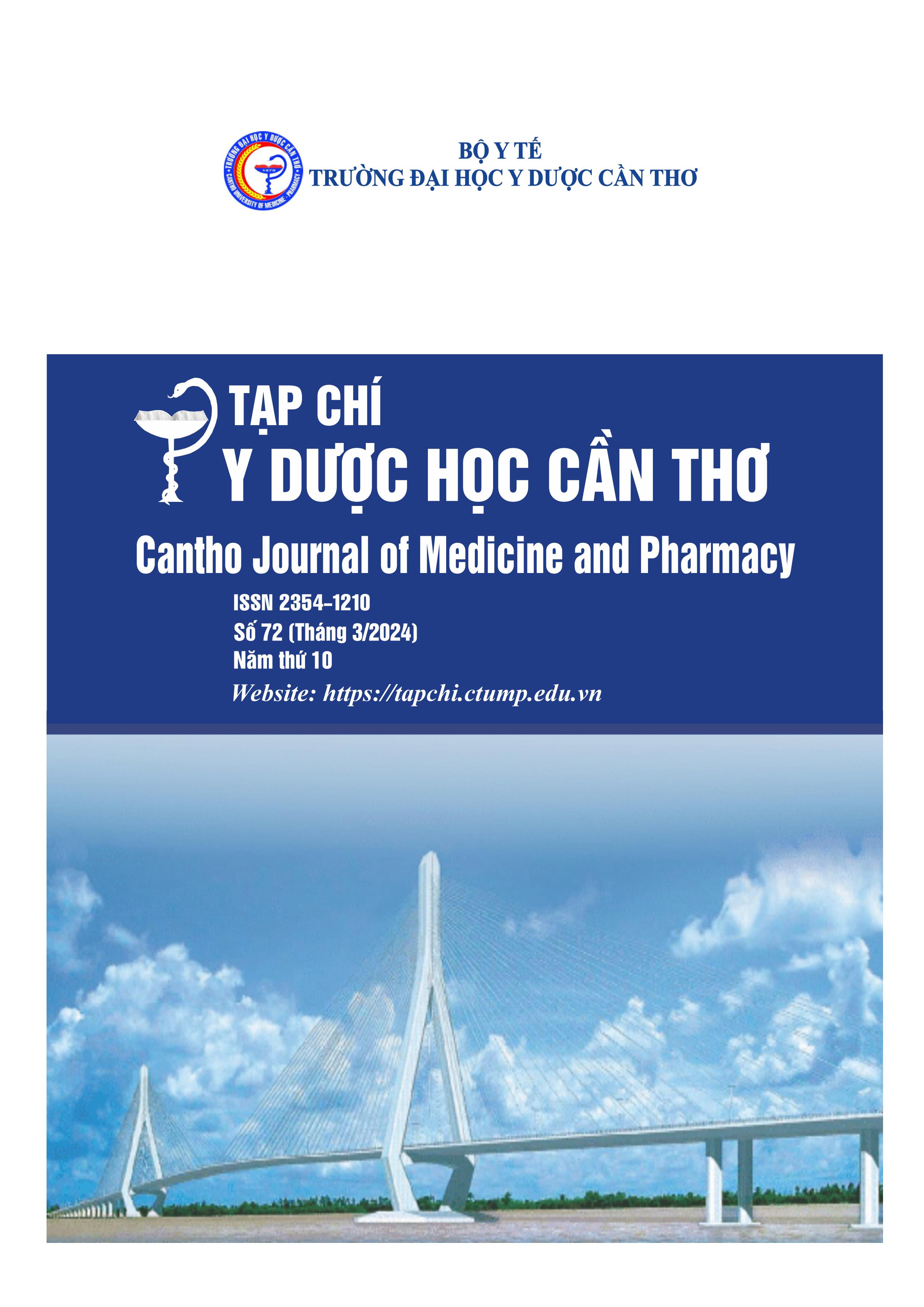CONGENITAL VAGINAL ATRESIA MANAGEMENT OUTCOMES IN CHILDREN
Main Article Content
Abstract
Background: Vaginal atresia is a rare congenital obstruction lesions of the female genital tract. Objectives: To explore the characteristics and to investigate outcomes of vaginal atresia treament in Children’s Hospital 1. Materials and methods: Retrospective study. Description of a series of cases with 35 children who underwent surgery for vaginal atresia between January 1st, 2012 and June 1st, 2022. Results: There were thirty-five children met the sampling criteria, identified and charted. The mean age was 12.5±1.5 years. Abdominal pain was the main reason causes of admissions. Throughout examinations, it was realized that the vital symptom was no vaginal opening accounting for 94.3%, and 80% of listed children had developed secondary genitalia. All pediatric patients were evaluated physically with 2 normal ovaries by ultrasound and magnetic resonance. The average distance from the perineum to the level of the obstruction was 26.4±13.5 mm. All patients underwent pull-through vaginoplasty with similar operative techniques. The average operative time was 65 ± 31.7 minutes. After the first surgery, the symptoms were gone in 88.6% cases. Conclusion: Vaginal atresia is managed with pull-through vaginoplasty.
Article Details
Keywords
Vaginal atresia, vaginoplasty, congenital vaginal obstruction
References
2. Poljak D., Hoefgen H., Merritt D. Distal Vaginal Atresia. J Pediatr Adolesc Gynecol. 2020. 33, 235-236. doi:10.1016/j.jpag.2020.01.056.
3. Laufer M.R. Congenital anomalies of the hymen and vagina. UpToDate. Updated March 3, 2020. Accessed April 6, 2021, https://www.uptodate.com/contents/congenital-anomalies-ofthe-hymen-and-vagina.
4. Laufer M.R. Abnormalities of the Female Genital Tract. Pediatric Surgery (Seventh Edition). Mosby. 2012. 1591-1609.
5. Zhu L., Wong F., Lang J. Atlas of surgical correction of female genital malformation. Springer. 2015. 85-205.
6. Hillard P.J.A. Pediatric and Adolescent Gynecology Is Care for the Underserved. J Pediatr Adolesc Gynecol. 2021. 34(2),109-111. doi:https://doi.org/10.1016/j.jpag.2021.01.017.
7. Zhang M., Zhang M.X., Li G.L., Xu C.J. Congenital vaginal atresia: A report of 39 cases in a regional Obstetrics and Gynecology Hospital. J Huazhong Univ Sci Technol. 2017. 37(6), 928932. doi:10.1007/s11596-017-1829-2.
8. Dural O., Ugurlucan F.G., Yasa C., et al. A Case of Distal Vaginal Agenesis Presenting with Recurrent Urinary Tract Infection and Pyuria in a Prepubertal Girl. J Pediatr Adolesc Gynecol. 2017. 30(1), e7-e10. doi:10.1016/j.jpag.2016.08.007.
9. Zhang H., Qu H., Ning G., et al. MRI in the evaluation of obstructive reproductive tract anomalies in paediatric patients. Clinical radiology. 2017. 72(7), 612.e7-612.e15. doi:10.1016/j.crad.2017.02.002.
10. Xu S., Zhang J., Wang S., et al. MRI features and differential diagnoses of congenital vaginal atresia. Gynecol endocrinol : the official journal of the International Society of Gynecological Endocrinology. 2019. 35(9), 777-781. doi:10.1080/09513590.2019.1588875.
11. Gynecologists AcoOa. Management of acute obstructive uterovaginal anomalies. Accessed April 04, 2021. https://www.acog.org/clinical/clinical-guidance/committeeopinion/articles/2019/06/management-of-acute-obstructive-uterovaginal-anomalies.
12. Mansouri R., Dietrich J.E. Postoperative Course and Complications after Pull-through Vaginoplasty for Distal Vaginal Atresia. J Pediatr Adolesc Gynecol. 2015. 28(6), 433-6. doi:10.1016/j.jpag.2014.12.007.
13. Lê Thanh Hùng, Trần Đại Phú. Bất sản âm đạo. Phác đồ điều trị nhi khoa 2020. Bệnh viện Nhi Đồng 1. 2020. 93-94.
14. Van B.C., Willemsen W. Treatment of patients with a congenital transversal vaginal septum or a partial aplasia of the vagina. The vaginal pull-through versus the push-through technique. J Pediatr Adolesc Gynecol. 2009. 22(3), 157-61. doi:10.1016/j.jpag.2008.02.008.


